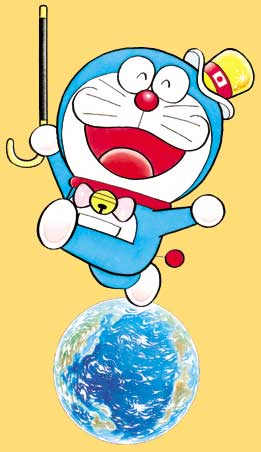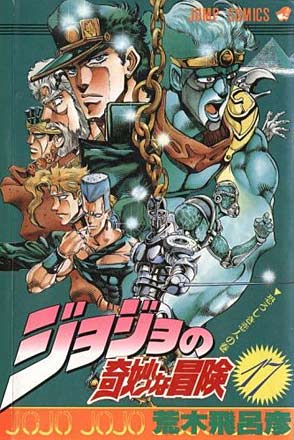Not manga or comics-related, but documentaries that have made a strong impression on me. Cinema has always been one of my strong influences, and cinema would include documentaries, so I watch these with strong abandon too. Here are some great documentaries I’ve seen, and would recommend to people.
1) The “Up” Documentaries (ie. 7Up, 14Up, 21Up, 28Up, etc)
28Up onwards directed by Michael Apted
The “Up” documentaries is one of the most long-running and profound documentaries ever made. This documentary series traces a group of 7 year-old children from Britain in the 1950s, and every 7 years, returns to see how their lives have progressed. The subjects of the documentary comes from all sectors of society, as the original question posed was whether Britain’s class structure was breaking down. After 42 years, however, this becomes a moot point. What is a far more interesting about this documentary series is seeing the subjects at age 7 and age 14, speculating about their future lives, then see them grow into adults, into middle age with their own children, and comparing what they once were with what they are now (49Up is the latest in the series).
This documentary series may be the only one I’ve seen in which everyone has something to learn from. If you’re a writer or an artist, you will benefit greatly from seeing this. It poses to the audience a universal question: what makes us who we are NOW, at this point in time? Is it our upbringing? Our personalities? Or just the plain randomness of life? This series doesn’t answer those questions, but it gives plenty of ground to ponder on. Highly recommended.
NB. This series has produced 5 spin-offs: 7Up USA, Japan, South Africa… can’t remember the rest.
2) American Movie
Directed by Chris Smith
If you’re an artist of any sort, you’ll find something in this movie to identify with. American Movie is a story both sad and funny about a 30-year old man called Mark Borchardt. Mark’s dream is to direct a become a movie director (preferably in Hollywood), despite the fact that he can only do odd jobs, seems to be going nowhere, and makes short horror movies with names like “The More The Scarier 3”. He may seem like a loser, and in a way he IS a loser in the way all unsuccessful artists are “losers”, but he has a drive and determination you can’t help but admire.
… If I have made this movie sound like a Disney documentary, then I didn’t mean to. It is anything but cute and heart-warming. Mark’s life is a struggle every single day, and while this documentary will make you laugh in disbelief, you won’t come away from it feeling warm and fuzzy. It’s a portrait of a driven, desperate man; not a 104-minute feel-good movie propounding the nobility of artistic sacrifice.
3) Crumb
Directed by Terry Zwigoff
A documentary ABOUT a cartoonist. Not a manga-ka, but the famous Robert Crumb (more like the “infamous” Robert Crumb). If you haven’t seen his work, see then this documentary first because you may be alarmed by what he draws. This man specialises in taking inspiration from the dark, grotesque side of human nature, and in this documentary where Crumb and his family are interviewed, you get to see why
What is surprising about this documentary is the honest and articulate way Crumb and his brothers talk about themselves and each other. Frankly, I couldn’t believe what I was hearing half the time – this documentary has to be seen (heard) to be believed. You’d think people with lives like this would at least try and tone down the details, but no. Crumb and his brothers see themselves with startling clarity, and this movie made me wonder how many other families out there are like this one. It’s a scary thought.
4) Hoop Dreams
Directed by Steve James/Frederick Marx/Peter Gilbert
Hoop Dreams is about young black basketballers who dream of being NBA stars. About 25 make it each year, out of a crop of about 40,000 high schoolers. This is the story of two such young men, coming from the wrong side of the tracks and taking on basketball in an effort to leave the streets. When you live in a neighbourhood where there’s a drug dealer around every corner, anything is preferable to having to spend the rest of your life there.
And here, the story is not only about the sporting hothouses American high schools are, but about the lives of those who live in less-than-ideal neighbourhoods. This is the story that makes me get pissed off about the way hip-hop culture glamourises violence, black violence, poverty and ghetto life. If you’ve never met anyone from a inner-city ghetto, well, here’s the story that will show you the names, the faces and the dreams of the disadvantaged young black men who grow up there. And you’ll see why things such as desperation and disadvantaged backgrounds should never be turned into a marketing ploy. The people in this film, especially Mrs Agee (One of the subject’s mum), deserve so much better than this.
5) Bowling for Columbine
Directed by Michael Moore
No introduction needed, really. Michael Moore’s a funny guy, and he genuinely asks some important and interesting questions about the USA’s love affair with guns. This documentary is a compelling view for non-Americans, as the American fascination with gun ownership is something that is quite unique in the world. Many people all the world over own guns, but mainly as a hunting tool, or it’s a necessary part of their profession. Only in America do people buy guns for self-defense, and that’s where all the trouble starts.
Just try and start a debate about whether Americans need to own guns with Americans. The fervity of their defense against their right to own firearms can be alarming (why get so worked up?). There IS indeed a cultural difference here, and it goes beyond all the usual suspects like violent movies, video games and goth music. They have ALL that in Australia too, and many people don’t lock their doors here either (like Canada). It seems to be borne out of a national fear that something is out to GET you, so you have to protect yourself first. Either way, this documentary doesn’t have the answers, but asks plenty of provocative questions.


